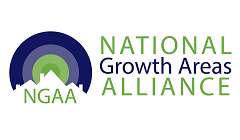National Growth Areas Alliance (NGAA)
Household income quartiles
In the National Growth Areas Alliance (NGAA), the 'medium highest' quartile was the largest group in 2021, comprising 28% of households with income.
Households form the common 'economic unit' in our society. Household Income is one of the most important indicators of socio-economic status. With other data sources, such as Qualifications and Occupation, it helps to reveal the National Growth Areas Alliance (NGAA)'s socio-economic status and economic opportunities. Household income levels are not comparable over time because of the influences of economic change such as wage level fluctuations and inflation. The income quartile method is a powerful and objective way of looking at income data and in particular, how it is changing.
A detailed explanation of how Household Income quartiles are calculated and interpreted is available in specific data notes.
Learn more about the characteristics of low-income households here.
Derived from the Census question:
'What is the total of all wages/salaries, government benefits, pensions, allowances and other income the person usually receives?'
Households
| Household income quartiles | ||||||||
|---|---|---|---|---|---|---|---|---|
| National Growth Areas Alliance (NGAA) - Households (Enumerated) | 2021 | 1991 | Change | |||||
| Quartile group | Number | % | City of Wanneroo % | Number | % | City of Wanneroo % | 1991 to 2021 | |
| Lowest group | 365,125 | 22.7 | 21.8 | 31001 | 112,186 | 20.3 | 23.0 | +252,939 |
| Medium lowest | 429,562 | 26.7 | 25.9 | 31002 | 132,579 | 23.9 | 27.6 | +296,983 |
| Medium highest | 451,427 | 28.1 | 29.0 | 31003 | 156,594 | 28.3 | 28.5 | +294,833 |
| Highest group | 361,984 | 22.5 | 23.2 | 31004 | 152,623 | 27.6 | 20.9 | +209,361 |
| Total Households | 1,608,100 | 100.0 | 100.0 | 553,984 | 100.0 | 100.0 | +1,054,116 | |
Source: Australian Bureau of Statistics, Census of Population and Housing (opens a new window) 1991 and 2021. Compiled and presented by .id (opens a new window)(informed decisions).
(Enumerated data)
| Household income - Quartile group dollar ranges | |||||||
|---|---|---|---|---|---|---|---|
| Calculated from income data for Australia | Weekly income by Census year | ||||||
| Household income ranges | 2021 | 2016 | 2011 | 2006 | 2001 | 1996 | 1991 |
| Lowest group | $0 to $867 | $0 to $743 | $0 to $625 | $0 to $539 | $0 to $413 | $0 to $336 | $0 to $300 |
| Medium lowest | $868 to $1,740 | $744 to $1,431 | $626 to $1,229 | $540 to $1,025 | $414 to $784 | $337 to $633 | $301 to $557 |
| Medium highest | $1,741 to $2,949 | $1,432 to $2,433 | $1,230 to $2,208 | $1,026 to $1,700 | $785 to $1,350 | $634 to $1,074 | $558 to $923 |
| Highest group | $2,950 and over | $2,434 and over | $2,209 and over | $1,701 and over | $1,351 and over | $1,075 and over | $924 and over |

Compiled and presented in profile.id by .id (informed decisions).

Compiled and presented in profile.id by .id (informed decisions).
Dominant groups
Income quartiles allow us to compare relative income-earning capabilities across time. Analysis of the distribution of households by income quartile in National Growth Areas Alliance (NGAA) compared to City of Wanneroo shows that there was lesser proportion of households in the highest income quartile and a greater proportion in the lowest income quartile.
Emerging groups
The most significant change in National Growth Areas Alliance (NGAA) between 1991 and 2021 was in the medium lowest quartile which showed an increase of 296,983 households.
